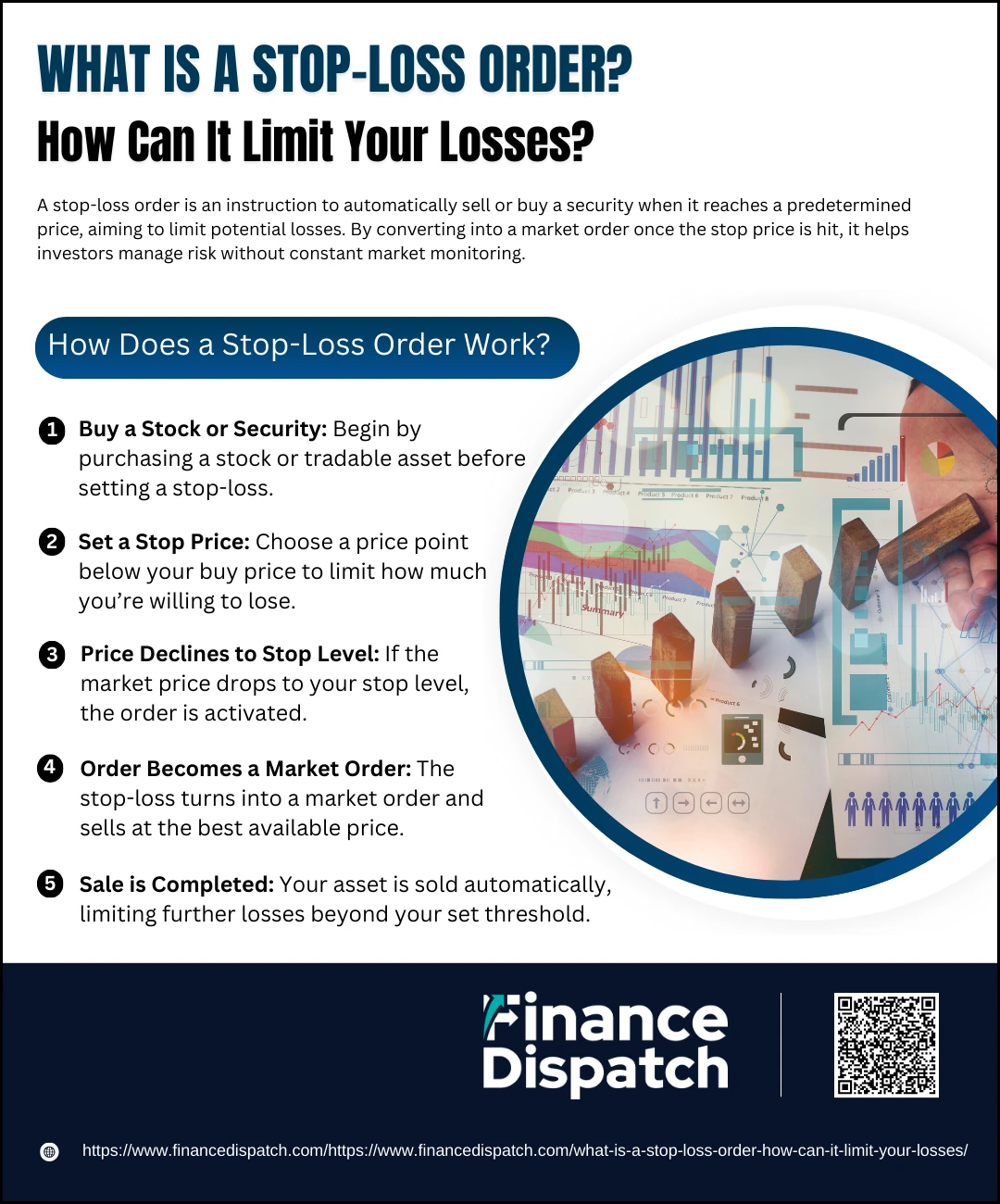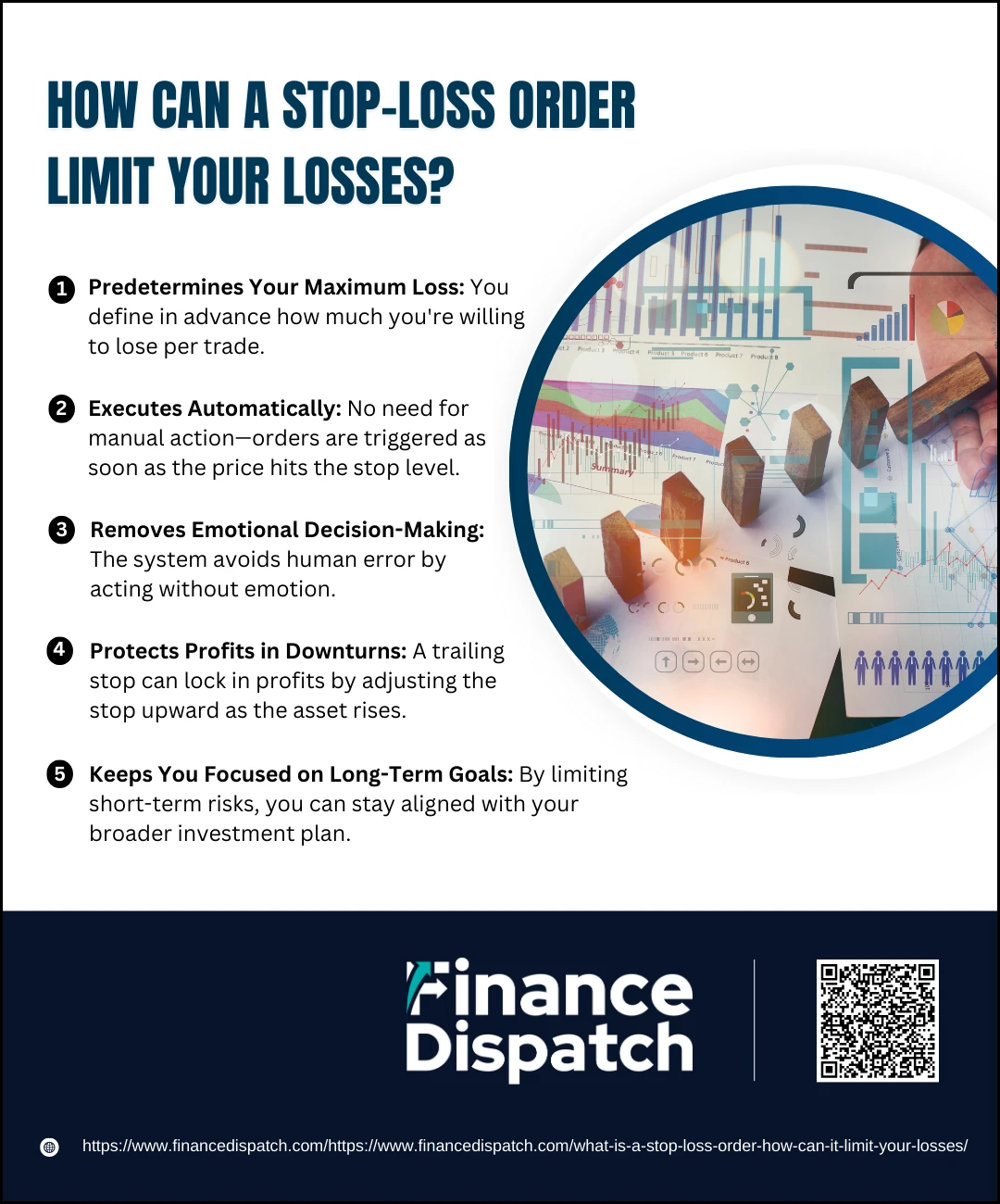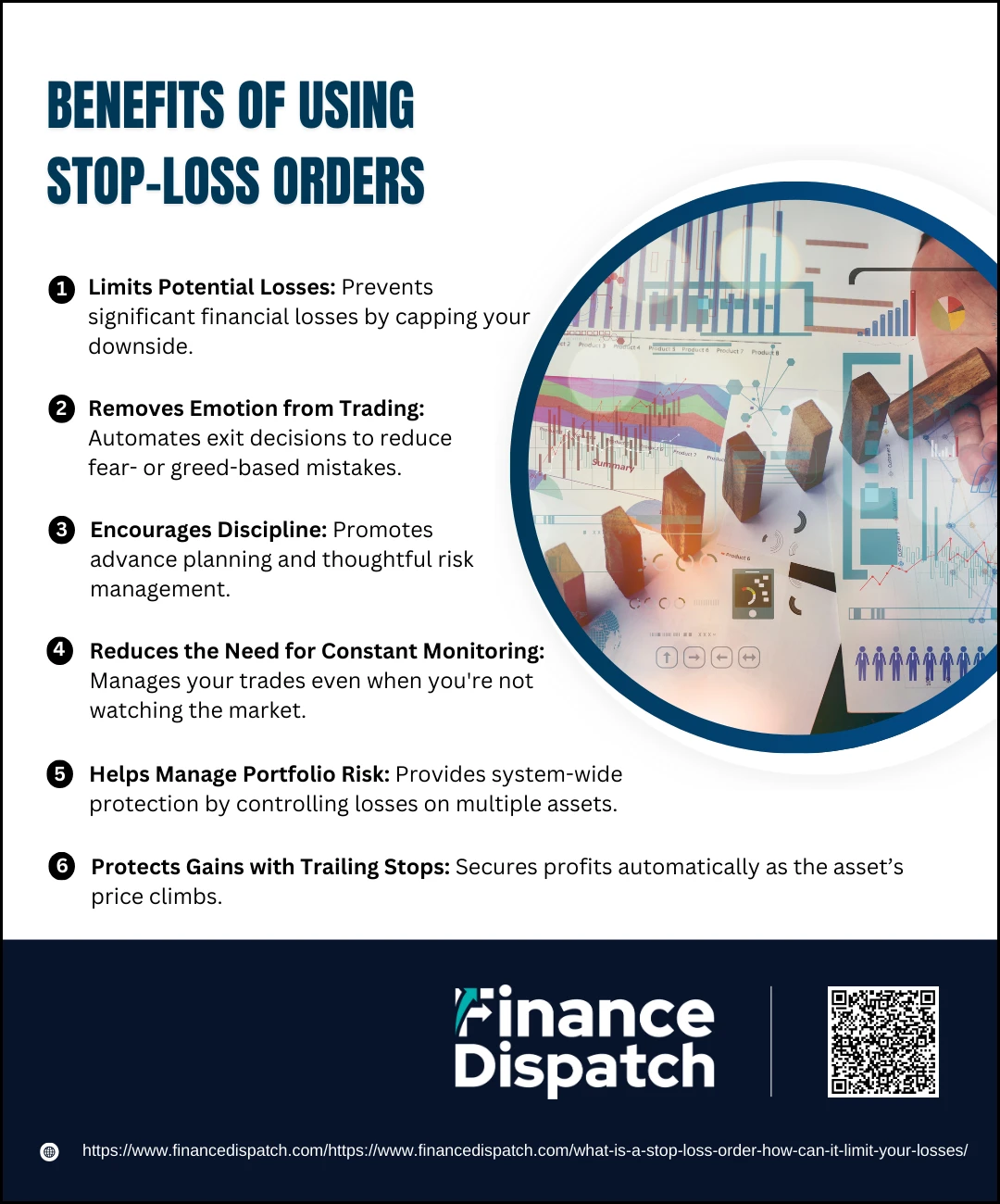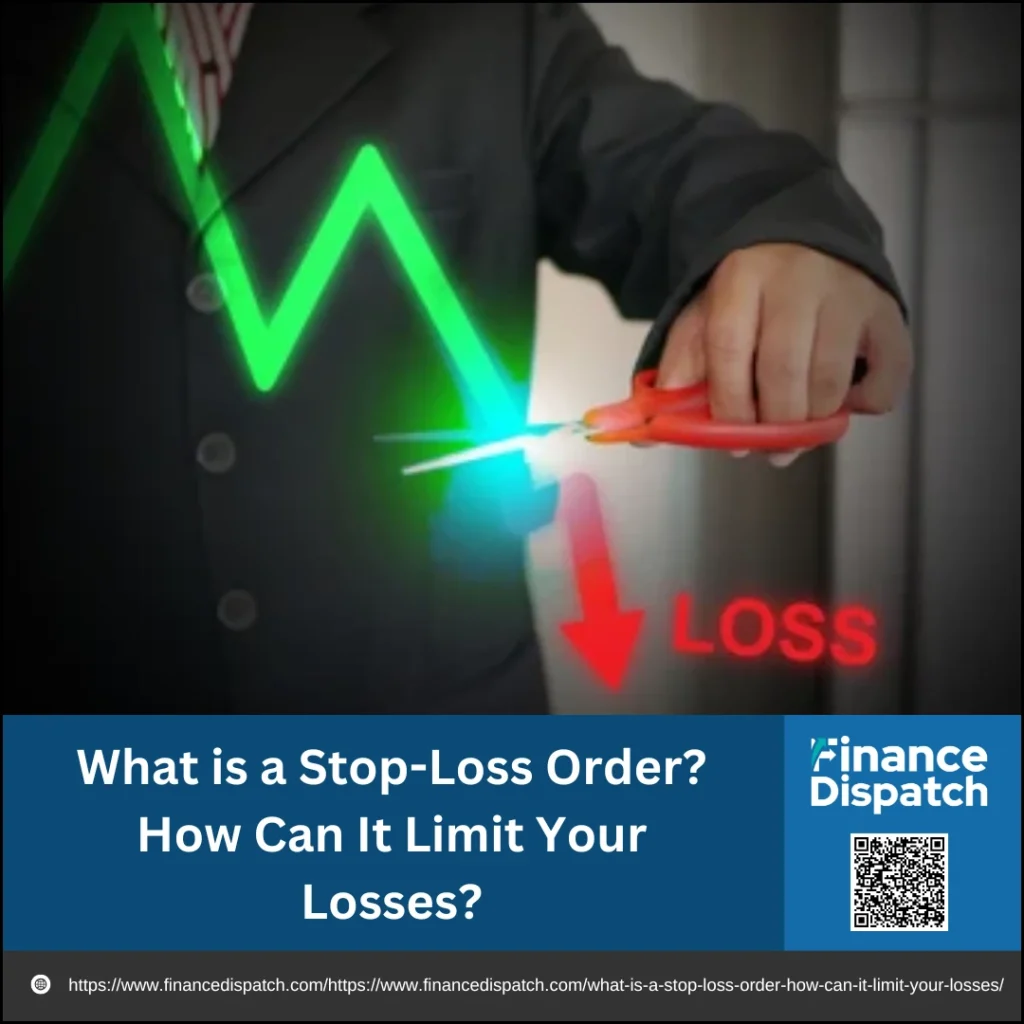Investing in the stock market offers the potential for significant gains—but it also comes with the risk of unexpected losses. One of the most effective ways to manage that risk is by using a stop-loss order. Whether you’re a beginner or an experienced trader, protecting your capital should always be a priority. A stop-loss order acts as a safety net, automatically triggering a sale when a stock’s price falls to a predetermined level. This helps investors avoid holding onto losing positions for too long and limits the emotional impact of sudden market swings. In this article, we’ll break down what a stop-loss order is, how it works, and how it can be a crucial tool for limiting your losses.
What is a Stop-Loss Order?
A stop-loss order is a risk management tool used by investors to automatically sell a security when its price drops to a certain predetermined level. The primary goal of this order is to limit an investor’s potential loss on a trade. For example, if you purchase a stock at $50 and set a stop-loss at $45, the order will trigger a sale if the stock falls to $45 or lower—helping you avoid further decline in value. Unlike manually monitoring the market, a stop-loss order works automatically, making it especially useful during periods of high volatility or when you’re unable to watch your investments closely. It acts as a safeguard, ensuring that you exit a losing position before the damage becomes too severe.
 How Does a Stop-Loss Order Work?
How Does a Stop-Loss Order Work?
A stop-loss order is a simple yet effective tool that helps investors manage risk by automating the selling process when a stock’s price falls below a set threshold. Instead of constantly monitoring your investments, a stop-loss allows you to set a “trigger price” in advance. If the market moves against you, the system executes your sell order automatically—helping to minimize potential losses without emotional interference.
Here’s how the process works step by step:
1. Buy a Stock or Security
Before using a stop-loss order, you must first invest in a stock or other tradable asset. For example, let’s say you buy shares of a company at $100 each. You’re optimistic about the stock’s future but want to protect your position in case the market turns unexpectedly.
2. Set a Stop Price
Next, you decide how much loss you’re willing to accept and place a stop-loss order at a price below your purchase price. If you set it at $90, you’re saying that you’re willing to risk a $10 loss per share. This level is known as the stop price, and it reflects your personal risk tolerance or trading strategy.
3. Price Declines to Stop Level
As the market fluctuates, the stock price may rise or fall. If the stock falls to your stop price of $90, the stop-loss order is triggered. At this moment, your sell order is activated without you having to take any manual action.
4. Order Becomes a Market Order
Once triggered, the stop-loss order turns into a market order. That means your shares will be sold at the best available price in the market. This process happens instantly, but the exact selling price may vary slightly, especially in fast-moving or volatile markets.
5. Sale is Completed
The stock is sold, and the proceeds are credited to your account. You’ve successfully limited your loss and prevented a potentially bigger financial setback. For example, if the stock continues to drop to $80 or lower, you’ve avoided an additional $10 or more in losses thanks to the stop-loss.
 How Can a Stop-Loss Order Limit Your Losses?
How Can a Stop-Loss Order Limit Your Losses?
Investing always carries a level of risk, but a stop-loss order offers a practical way to take control of that risk. By setting a price at which your position will be automatically sold, you protect yourself from watching a small dip turn into a major loss. A stop-loss order takes the guesswork and emotion out of selling during market downturns. It’s an essential tool for both cautious investors and active traders who want to safeguard their capital and stay disciplined, even in volatile markets.
Here’s how a stop-loss order effectively limits your losses:
1. Predetermines Your Maximum Loss
Before you even enter a trade, a stop-loss lets you decide how much you’re willing to lose. For example, if you buy a stock at $100 and set a stop-loss at $90, you limit your potential loss to about 10%. This ensures your losses remain within your risk tolerance and protects your overall investment portfolio.
2. Executes Automatically
Once the market price reaches your stop level, the order is triggered and the asset is sold automatically. This feature is especially helpful if you are unable to monitor the market constantly. You don’t need to be online or make a split-second decision—your stop-loss handles it for you.
3. Removes Emotional Decision-Making
Emotions like fear, panic, or greed can cloud judgment when markets turn volatile. A stop-loss order acts based on logic and predefined rules, not emotion. This helps you avoid hesitation or the impulse to “wait and see” as losses pile up.
4. Protects Profits in Downturns
If your investment has increased in value, you can adjust your stop-loss upward to lock in gains. This is called a trailing stop-loss. For instance, if your stock rises from $100 to $120, you might move the stop-loss to $110 to ensure that if the price falls, you’ll still retain a $10 profit per share.
5. Keeps You Focused on Long-Term Goals
With your downside risk managed, you’re less likely to be distracted by short-term market movements. This allows you to stay committed to your broader investment strategy and avoid making impulsive decisions that could derail your long-term financial goals.
Types of Stop-Loss Orders
Not all stop-loss orders function the same way. Depending on your investment strategy, market conditions, and risk tolerance, you can choose from different types of stop-loss orders to better control how and when your trades are executed. Understanding these variations allows you to tailor your risk management approach, helping you respond more effectively to market movements.
Here are the main types of stop-loss orders:
1. Stop-Loss Market Order
This is the most basic type. When the stop price is reached, the order becomes a market order, meaning it will be sold at the next available market price. It’s simple and ensures execution, but in volatile markets, the actual selling price may be lower than the stop price due to slippage.
2. Stop-Loss Limit Order
With this type, once the stop price is triggered, the order becomes a limit order to sell at a specified minimum price. This gives you more control over the sale price, but there’s a risk the order may not execute if the market price drops below your limit before a buyer is found.
3. Trailing Stop Order
This dynamic type of stop-loss moves with the market. Instead of setting a fixed price, you set a percentage or dollar amount below the market price. As the asset price rises, the stop level adjusts upward, locking in profits while still offering downside protection. If the price falls, the stop remains in place and will trigger once the defined trail distance is crossed.
 Benefits of Using Stop-Loss Orders
Benefits of Using Stop-Loss Orders
A stop-loss order isn’t just a tool for active traders—it’s a smart risk management strategy for any investor. It provides a layer of protection that helps guard against sudden market drops and emotional decision-making. Whether you’re managing a few stocks or an entire portfolio, using stop-loss orders can bring structure, discipline, and peace of mind to your investing journey. It allows you to make calculated decisions upfront, rather than scrambling to react when prices fall unexpectedly.
Here are the key benefits of using stop-loss orders in more detail:
1. Limits Potential Losses
This is the most obvious and important advantage. A stop-loss order defines the maximum amount you’re willing to lose on an investment. If the market moves against your position, the order is triggered and your asset is sold before the loss gets out of hand. This helps you preserve your capital and avoid devastating setbacks, especially during volatile market conditions.
2. Removes Emotion from Trading
Emotional reactions like fear, panic, and greed can cloud your judgment and lead to poor decisions. A stop-loss order eliminates the need to make quick decisions under pressure by automating your exit strategy. This allows you to follow your plan objectively, regardless of market noise or short-term fluctuations.
3. Encourages Discipline
By requiring you to set a predefined exit point, a stop-loss order forces you to think ahead about how much risk you’re willing to take. This upfront planning encourages more disciplined, thoughtful investing—qualities that often separate successful investors from impulsive ones.
4. Reduces the Need for Constant Monitoring
Not everyone has the time to watch the market all day. With a stop-loss order in place, your trade is automatically managed even when you’re not paying attention. This is particularly beneficial for part-time investors or those with full-time jobs and other commitments.
5. Helps Manage Portfolio Risk
When applied across multiple positions, stop-loss orders can serve as a system-wide risk control. You can cap the downside on each holding, helping to balance your overall risk exposure and protect your entire portfolio during market corrections or crashes.
6. Protects Gains with Trailing Stops
A trailing stop-loss allows you to follow upward price movements and secure gains without manually adjusting your exit point. As the asset price rises, the stop level moves up with it. If the price reverses, the order is triggered, locking in your profits before they evaporate.
Drawbacks and Limitations of Stop-Loss Orders
While stop-loss orders can be valuable tools for managing risk, they are not without their flaws. It’s important to understand that they don’t guarantee a specific exit price and may not always work as expected, especially in fast-moving or illiquid markets. In some cases, they might even result in missed opportunities or unintended sales. Knowing the limitations can help you use stop-loss orders more effectively and avoid costly surprises.
Here are the main drawbacks and limitations of stop-loss orders:
1. No Guarantee of Execution at Stop Price: Once triggered, a stop-loss becomes a market order. This means the sale will occur at the next available price, which may be significantly lower than your stop price during volatile market swings.
2. Price Gaps Can Trigger Unintended Sales: If a stock opens significantly lower than its previous closing price (a price gap), the stop-loss may execute at a much lower price than expected—resulting in a larger loss than planned.
3. Temporary Dips Can Trigger Early Exits: Minor, short-term fluctuations can activate your stop-loss, causing you to exit a position that may have quickly recovered.
4. Not Ideal for Long-Term Investors: Long-term investors may prefer to ride out short-term volatility rather than automatically selling when prices dip. In these cases, a stop-loss can interfere with a long-term growth strategy.
5. Doesn’t Work Well with Illiquid Stocks: Stocks with low trading volume may not find a buyer immediately after the stop-loss is triggered, leading to poor execution or partial fills.
6. Requires Careful Planning: Setting your stop-loss too close to the purchase price can result in frequent, unnecessary sales. Too far, and it might not offer meaningful protection.
Real-Life Example of Stop-Loss Orders
To better understand how a stop-loss order works in practice, let’s look at a simple real-life scenario involving an investor and a stock purchase. This example highlights how a stop-loss order can automatically protect your investment from deeper losses, even when you’re not actively monitoring the market. It also shows how setting a predefined exit strategy can make a big difference when the market takes a sudden turn.
Here’s how the scenario might play out:
1. Investor Purchase: Sarah buys 100 shares of a technology stock at $50 per share, investing a total of $5,000.
2. Stop-Loss Order Placed; To manage her risk, she sets a stop-loss order at $45 per share, meaning she’s willing to accept a maximum loss of $5 per share.
3. Market Movement: A few weeks later, the company reports weak earnings, and the stock begins to decline rapidly.
4. Stop Price Triggered: As the stock falls and hits $45, Sarah’s stop-loss order is triggered, converting into a market order.
5. Automatic Execution: The shares are sold immediately at the next available price, which is $44.90—very close to her stop price.
6. Loss is Contained: Sarah exits the position with a loss of $510 instead of risking further decline if the stock continues falling.
Stop-Loss vs. Take-Profit Orders
Both stop-loss and take-profit orders are essential tools in a trader’s risk management strategy. While a stop-loss order is designed to limit potential losses by automatically selling an asset when its price falls to a certain level, a take-profit order does the opposite—it locks in gains by selling when the price reaches a predetermined profit target. Using these two orders together can help traders manage both the downside and upside of a trade more effectively.
Here’s a comparison of stop-loss and take-profit orders:
| Feature | Stop-Loss Order | Take-Profit Order |
| Purpose | To limit losses | To lock in profits |
| Trigger Condition | When price falls to a set level | When price rises to a target level |
| Order Type After Trigger | Converts to a market or limit order | Converts to a limit order |
| Used When | Market moves against your position | Market moves in your favor |
| Emotional Benefit | Reduces fear and panic during losses | Prevents greed from holding too long |
| Risk Management Role | Protects capital during downturns | Secures gains before reversal |
| Commonly Used By | Both long-term investors and active traders | Mostly active traders or short-term investors |
When Should You Use a Stop-Loss Order?
You should consider using a stop-loss order whenever you want to protect your investment from unexpected downturns or limit how much you’re willing to lose on a trade. It’s especially useful when you’re unable to monitor the market continuously or when trading in volatile sectors where prices can change rapidly. Stop-loss orders are ideal for both short-term traders who need to manage risk on active positions and long-term investors who want to prevent a single stock from causing significant portfolio damage. Whether you’re entering a new position or holding one during uncertain market conditions, placing a stop-loss order helps you stay disciplined, plan your exit in advance, and avoid emotionally driven decisions.
Conclusion
Stop-loss orders are powerful tools that can help investors manage risk, protect capital, and maintain emotional discipline in an unpredictable market. By setting predefined exit points, you gain control over potential losses without needing to constantly monitor price movements. While stop-loss orders have their limitations, such as the risk of slippage or premature execution, their benefits often outweigh the drawbacks when used wisely. Whether you’re a beginner or an experienced trader, incorporating stop-loss strategies into your investment plan can lead to smarter, more confident decisions and better long-term outcomes.



